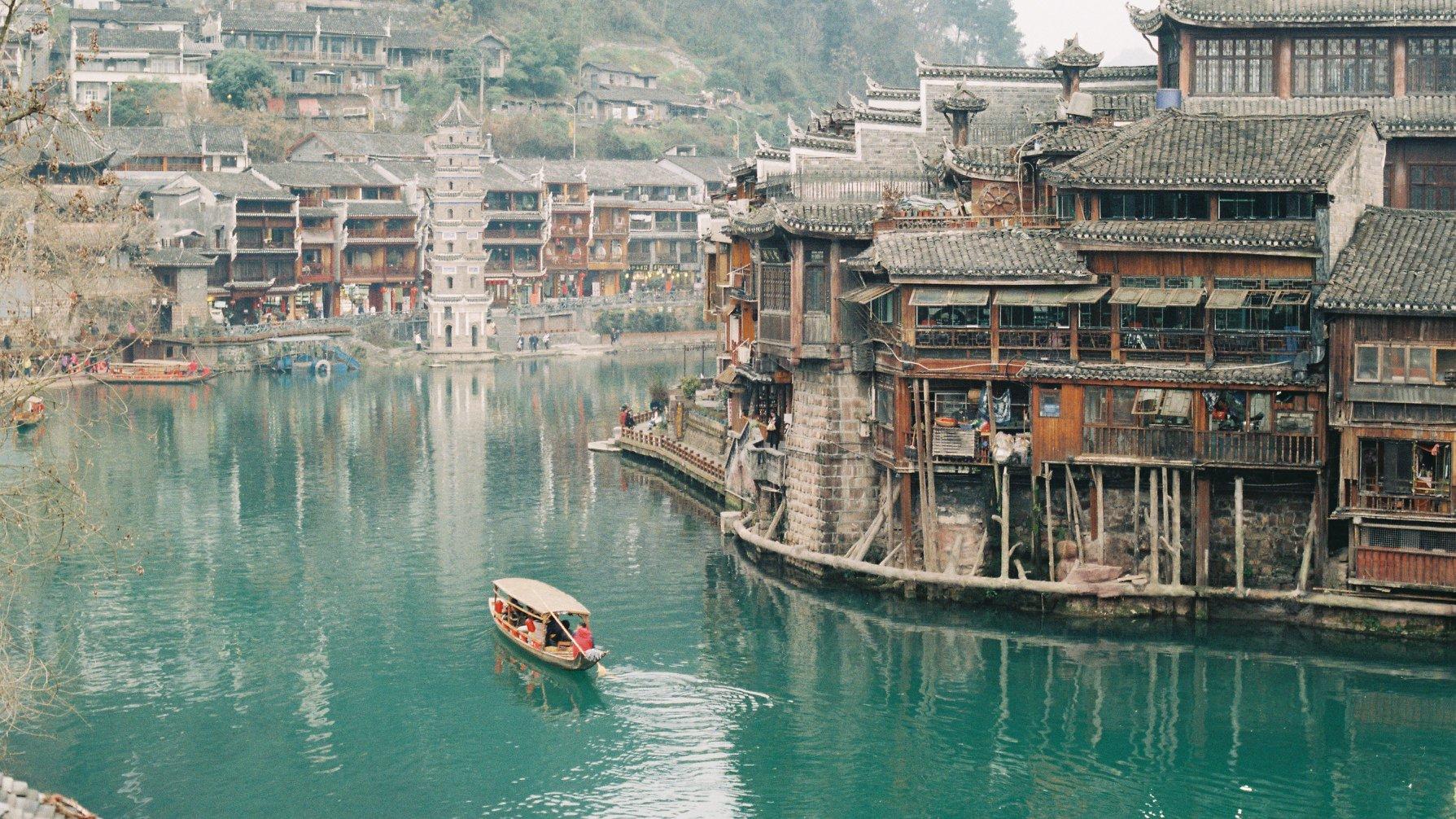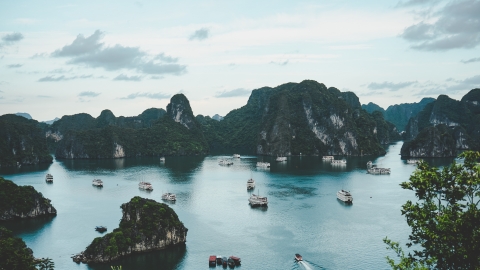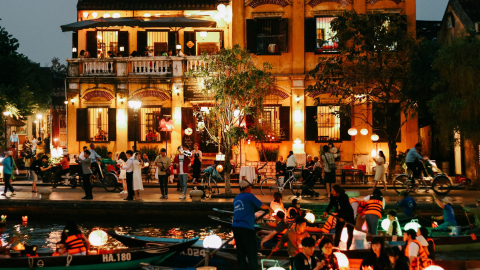Jingdezhen - the origin of Chinese ceramics
Jingdezhen, located in Jiangxi Province, is considered the porcelain capital of China with a history of 1,700 years. Visitors can visit the historic kilns that have produced beautiful porcelain for centuries. There are many places in China that produce porcelain, such as Quanzhou (Fujian) or Foshan (Guangdong), but the most famous is Jingdezhen (Jiangxi).

Jingdezhen ceramic artisans
Many merchants and artisans flocked to Jingdezhen to seek inspiration and purchase ceramics from the city’s shops and markets. Exhibitions were regularly held for the public to visit and watch artisans demonstrate how to make porcelain.
To learn about the ancient city’s porcelain history, visitors can stop by the newly built Jingdezhen Imperial Kiln Museum. The Ceramic Art Avenue, one of Jingdezhen’s most exciting creative spaces, is also a popular tourist destination.
Forbidden City - where mysteries exist in the heart of Beijing
If you have ever watched Chinese historical films or swordplay films, you will surely wish to visit the Forbidden City to see with your own eyes the true beauty of this place.
In Beijing, the Forbidden City is perhaps the pinnacle of Chinese palace architecture. Twenty-four emperors of the Ming and Qing dynasties lived here from 560 to 1911. The complex has more than 800 rooms with gilded roofs and typical Chinese feudal architecture.
The Forbidden City is the largest wooden structure recognized by UNESCO as a World Cultural Heritage. Coming here, you will be amazed by the magnificence of the complex, and even more interested in learning about the history of the kings who lived there. The structures in the Forbidden City are all meticulously carved and sculpted down to the smallest detail. The palace is made from precious woods, painted with gold and tin, and carved with sophisticated dragon and phoenix images.
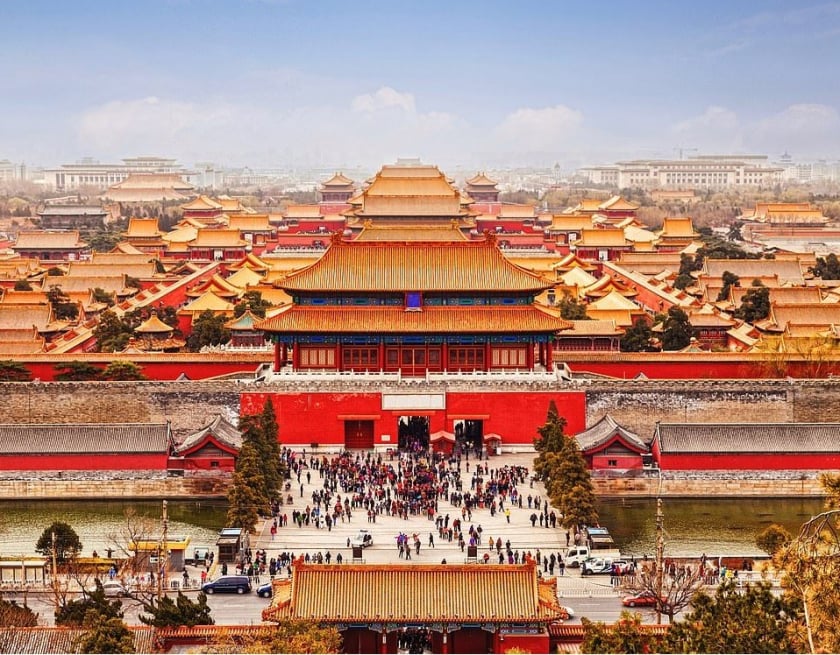
The Forbidden City is not only a famous tourist attraction in Beijing, but also considered a living history textbook of China.
Jiuzhaigou Scenic Area - paradise on earth in China
Jiuzhaigou is located south of the Minshan Mountains, 330 km north of Sichuan Province. In Tibetan, the name means “nine-village valley” referring to the nine villages that run along its length. It was once inhabited by Tibetans and Qiang people for centuries. It covers an area of 700 km2with mountain views reflected in 108 surrounding clear lakes.
Considered a paradise, Jiuzhaigou will give you the feeling of waking up to the sound of birds chirping, listening to the sound of streams and enjoying interesting survival experiences in the surrounding forests. The special thing about Jiuzhaigou is the lake right in the middle of this area that can change color according to the season and reflect the image of the surrounding trees and mountains every time the sky is clear and cloudless.
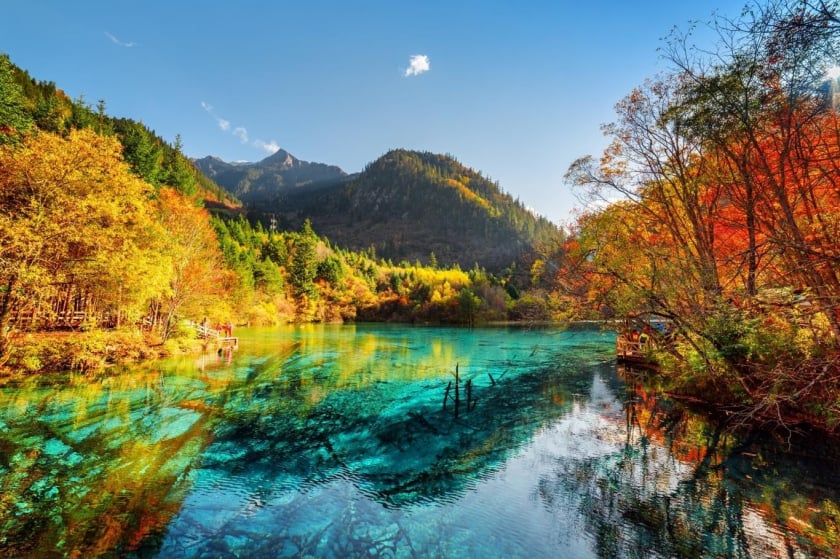
Jiuzhaigou also has many primeval forests with more than 200 types of trees such as pine, spruce, red fir, birch, rhododendron... and many rare animals such as pandas, national animals...
This area was formed on the sedimentary limestone mountains on the edges of the Tibetan plateau, famous for its multi-colored lake system and multi-tiered waterfalls and snow-capped peaks in winter. Jiuzhaigou was recognized by UNESCO as a world natural heritage in 1992, a world biosphere reserve in 1997.
The scenery in Jiuzhaigou is enchanting in all four seasons, but autumn (around October every year) is the most beautiful time here with carpets of leaves turning bright yellow next to the clear blue water that looks down to the bottom and the silvery white waterfall. The entire scene of Jiuzhaigou in autumn looks like a fairyland that is difficult to describe with words, so it is called "Heaven on Earth".
In particular, the Jiuzhaigou ecological area also has many primeval forests with more than 200 types of trees such as pine, spruce, red fir, dicotyledon, rhododendron... and many rare animals such as pandas, the national animal of China.
Phoenix Ancient Town - the breath of antiquity and peace
Phoenix Ancient Town is located on a tributary of the Three Gorges Dam in China. It has existed for more than 1,300 years and is home to many ethnic minorities. The reason why it is called Phoenix Ancient Town is because in the southwest of the town there is a mountain shaped like a phoenix flying up.
Although the area is only about 10 km2But tours to Phoenix Ancient Town attract a large number of participants, thanks to the charming landscape and the simple and quiet architecture of wooden houses and stone-paved roads hundreds of years old located next to the Da Giang River. This is certainly a completely new experience for tourists coming from bustling urban areas.
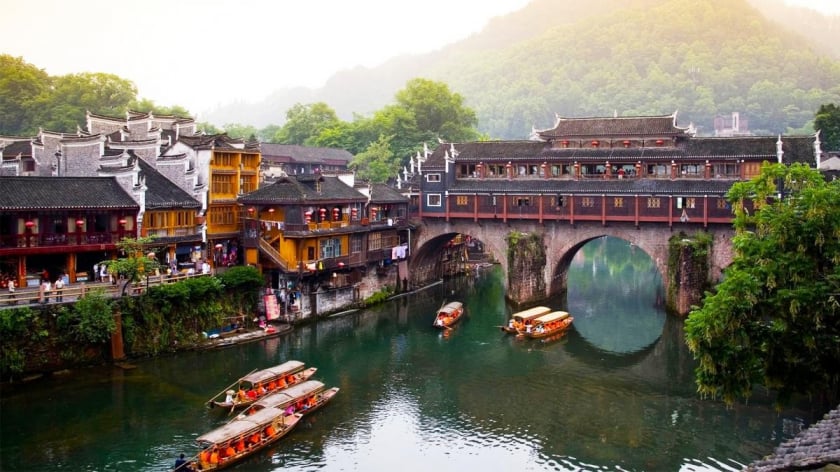
Phoenix Ancient Town is one of the most famous tourist destinations in China, attracting many visitors.
At night, the ancient town of Phoenix puts on a brilliant, modern look, contrasting with the majestic, quiet, ancient beauty of the ancient city during the day. The ancient streets are decorated with all kinds of colorful lights, and visitors often participate in fun activities and bustling shopping at this time.
Walking around the old quarters in Phoenix Ancient Town, visitors will be amazed as if they have returned to the past, transformed into ancient costume movies with ancient wooden houses, red lanterns hanging in every corner, white stone paved roads creating a captivating, lingering atmosphere that makes you not want to leave.






